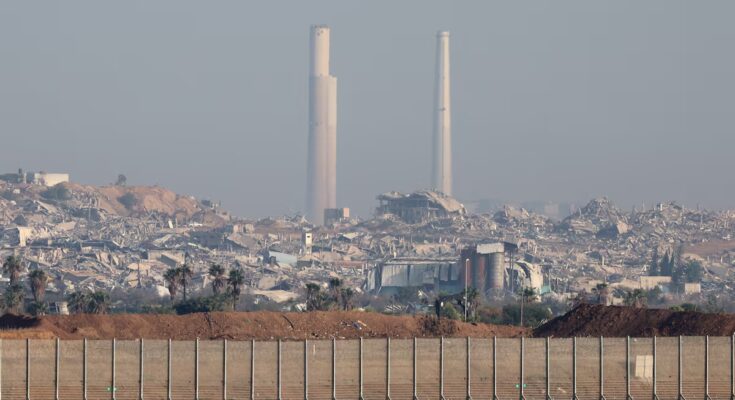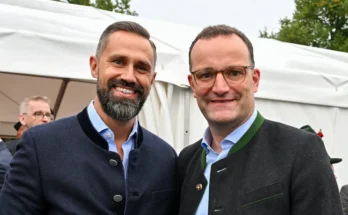The Palestinian militia Hamas, with tens of thousands of armed fighters in Gaza, completely rejected the United Nations resolution that mandated the American plan to stabilize a ceasefire in the Strip on Monday night. The refusal of the organization, which announced in a statement that it will not proceed with disarmament until there is a process towards the creation of a Palestinian state for which it finds no guarantees in the text of the resolution, leaves in the air a project whose approval by the Security Council represents a triumph for Donald Trump’s administration.
The opposition of the Gaza fighters contrasts with the satisfaction expressed by the other two actors directly involved in the ruling. Israeli Prime Minister Benjamin Netanyahu, who did not speak until Tuesday, “applauded” a resolution “that will lead to peace and prosperity because it insists on the complete disarmament and deradicalization of Gaza,” he wrote on the X social network.
The Palestinian Authority, which governs part of the West Bank – another Palestinian territory occupied by Israel and territorially separated from the Strip – welcomed the measure on Monday evening, interpreting it as an affirmation of the “Palestinians’ right to self-determination” and calling for its “immediate” implementation. He is, he said, “ready” to cooperate. Although indefinitely and without deadlines or guarantees, the plan foresees that in the future the Palestinian Authority will take control of the enclave.
The thirteen votes in favor without any votes against the proposed resolution received on Monday give legal legitimacy to the second phase of Trump’s roadmap, which includes among other things the disarmament of Hamas, the deployment of an International Stabilization Force (ISF) and the emergence of a “transitional” governance model – two years – led by Trump.
The first phase, which consisted of the cessation of hostilities and the release of prisoners in exchange for the resumption of the humanitarian flow, came into force on October 10 and was signed in a summit around the figure of the American with dozens of world leaders in Sharm el Sheikh (Egypt), where the president claimed to have put an end to 3,000 years of conflict.
However, the resolution avoids providing details on who and how should deal with the hot potato of Hamas disarmament, leaving open the irreconcilable conflict that has prevented a permanent truce agreement since the start of the war between Israel – which calls for the disarmament of the militias – and the Palestinian fighters – who demand, for this reason, a credible path towards a Palestinian state, something that the Israeli government excludes.
“The resolution does not respect the political rights of the Palestinian people,” protests Hamas in a statement released after the approval of the resolution. The group denounces that the text “imposes” an “international protection” that “the people and factions of Gaza reject” and underlines that the plan advances Israel’s “objectives” by giving the ISF the role “of disarming the resistance”. Hamas believes this element makes the mission “a pro-occupation part of the conflict.”
“Resisting the occupation by all means is a legitimate right guaranteed by international laws and conventions,” concludes the Hamas message. “(Disarmament) must be linked to a political process that guarantees the creation of a Palestinian state.”
A project with cracks
The approval of the resolution favors the advancement of the temporary truce towards a permanent state. But what shows up on paper has major outstanding challenges. Hamas’ refusal to surrender its arsenal under the conditions set out in the text could discourage candidate countries from joining the ISF. The resolution provides that this body cooperates “with Egypt and Israel” and that, among others, it takes on the task of “guaranteeing the process of demilitarization of the Strip” and disarming “non-state armed groups”.
The language used does not specify what degree of responsibility the ISF would have in the overall actions that must lead to the disarmament of Hamas, but indicates that the mission would go beyond peacekeeping, something that several candidate countries – especially Arab ones, such as Jordan – see as a red line.
Even if a foreign soldier sets foot in Gaza bearing the ISF logo, the resolution maintains a number of loopholes that could freeze Gaza in an intermediate state of the plan, without developing or eliminating the Israeli or international presence.
Point 2 of the ruling describes the Peace Board chaired by Trump as “a transitional administration” that will maintain control of the enclave until the Palestinian Authority completes some undetailed reforms, although it refers to a proposal from Saudi Arabia and France that called for that entity to democratize. The plan links the completion of this process in a “faithful” manner (without faithfully specifying what) with the hypothetical existence of a future “path to Palestinian self-determination”.
It is also unclear under what terms the Israeli army will withdraw from Gaza. According to point 7, the troops will withdraw as soon as the ISF establishes control of the territory “according to standards, stages and deadlines” that do not yet exist. This point protects the permanence of the Israeli occupation with one last loophole, legitimizing it until Gaza “is protected from the resurgence of the terrorist threat”, an element that Israel, as in Lebanon, could interpret to continue to act militarily.
On Tuesday, Gazans reacted to the Security Council’s approval of Trump’s ceasefire with a mix of skepticism and outright distrust. This is demonstrated by the journalistic information coming from inside the enclave and the interviews that EL PAÍS conducted by telephone on Tuesday with two citizens of Gaza.
Alaa Sbaih, a 25-year-old woman displaced in Gaza City, believes that the states behind the plan do not take into account the needs, will and interests of Gazans, and warns that neither the United States nor Israel “can eradicate the spirit of resistance of these suffering people.” Hassan Abu Qamar, an 18-year-old resident of the Nuseirat refugee camp (the center of the enclave), does not know how this resolution “could affect our lives in Gaza”.



